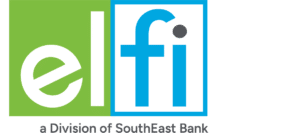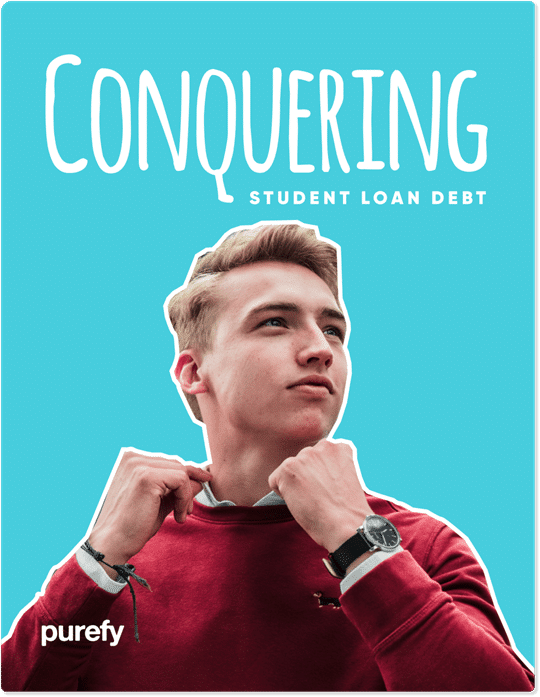The pause on federal student loan payments and interest will officially come to an end in Summer 2023. For more than two years, federal student loans have been on hold with the following measures of relief:
- Loan payments totally suspended,
- Temporary interest rate reduction to 0% so no interest accrued, and
- All collection efforts were suspended on loans in default.
While there is still an outside chance that President Biden could extend the deadline again, it is highly unlikely. It’s time to make sure you are positioned to reabsorb your student loan payments.
What’s changed for people since 2020
A lot has happened in the two years since the pandemic broke and a public health emergency was declared. Many people were thrown out of work or lost hours due to changing consumer habits.
According to the World Happiness Report, employment among young adults declined by 17.4%, almost three times that of other age groups. And Indeed.com reports that job postings (which fell by almost 50% at the beginning of the pandemic) remain well below 2019 trends.
It’s not difficult to see that there are people who will be struggling to manage their monthly student loan bills once the federal student loan freeze ends in Summer 2023. They will be looking for ways to free up their budget in this ‘new normal.’
How will I know when my payment restarts?
You will receive a statement at least 21 days before your new student loan payment is due. Your statement will detail your payment amount and new due date.
If you have moved or changed your name, it’s important that you contact your loan servicer with the new information or you may miss crucial information.
If you enjoyed auto-debit payments before the pause, you need to be sure they will continue through your bank. Most borrowers may need to restart their auto-debit enrollment. This should be done well in advance of your due date to ensure that your payment is not late.
How to lower monthly student loan payments?
Since early 2020, you may have a different job or live in a different community. Things may have drastically changed for you since the pause was put into place. Now is a good time to reassess your budget and decide the best course of action.
Here are 11 tips on the best ways to lower student loans each month. Consider each alternative and find one or several that work well for you and your situation.
The 2 Best Companies to Refinance Student Loans
Our Top-Rated Picks for 2024 Offer Low Rates and No Fees

1. Graduated repayment plan
For federal loans, you can sign up for the graduated repayment plan which lets you pay smaller payments in the beginning with the payments increasing every two years up to ten years. This plan is great when you have limited income now but expect your circumstances to improve over time.
The graduated repayment plan is available for federal direct loans, Stafford loans, and FFEL PLUS and consolidated loans.
With this type of repayment plan, you pay a lower amount to start, and your payment amount never goes up by more than three times. So, if your loan payment starts out at $130, it will never be higher than $390 at the end of the repayment schedule.
Also, there is a 10-year repayment period unless you have more than $30,000 in student loans. Then you can opt for a 25-year repayment plan.
2. Income-driven repayment plans
There are four income-driven repayment plans that are intended to make your federal student loans affordable based on your monthly income. The amount you pay is based on a percentage of your discretionary income which factors in your salary and any other monthly income you receive and your monthly bills. What remains is your discretionary income.
Each of these plans require you to submit an application. These plans also require you to recertify your income annually or risk forfeiture of participation in the plan. If there is any debt forgiven on your particular plan, please remember that the amount will be treated as income on your tax return.
- Revised Pay as You Earn Repayment Plan (REPAYE Plan) — This plan takes 10% your discretionary income and divides it by 12 to come up with monthly payments for your federal student loans. It also forgives any remaining balance due after 20 (undergraduate) or 25 (graduate) years of payments. Only direct federal loans are eligible.
- Pay As You Earn Repayment Plan (PAYE Plan) — Similar to the REPAYE Plan, but the applicant may have to prove hardship and has only a 20-year repayment option. Additionally, your payment will never be more than your Standard Repayment Plan monthly bill.
- Income-Based Repayment Plan (IBR Plan) — For direct loans, direct graduate PLUS loans, and FFEL and direct consolidation loans, either 10% (for loans issues after 1/1/14) or 15% (for loans issued prior to 12/31/13) of discretionary income. Remaining balances are eligible for forgiveness after 25 years.
- Income-Contingent Repayment Plan (ICR) — Usually considered as a last option, ICR sets monthly payments at either 20% of discretionary income, or monthly payments if amortized over 12 years.
3. Extended repayment plan
Under this type of plan, federal direct loans of more than $30,000 may be eligible for an extended repayment plan. This plan expands your repayment schedule to 25 years with the option of either fixed or graduated payments.
This plan does not base payments on income or forgive remaining balances, so there may be less financial relief overall. Additionally, you could pay more for interest over the life of the loan as well.
4. Federal student loan consolidation
Many people leave school with multiple student loans, each with its own interest rate and terms. By combining these federal student loans into a Direct Consolidation Loan, you would have a new single loan with a weighted average interest rate from the original loans.
From there you could apply for one of the income-driven repayment plans to further reduce your monthly loan payments.
5. Get a student loan deferment or forbearance
You can request a federal or private loan deferment or forbearance which stops your repayment process for a period of time. This does not negatively affect your credit (initially) and gives you time to reach financial stabilization before resuming payments.
Keep in mind — it should only be used as a temporary or short-term solution to give you time to reposition your financial stance. People who continually renew their status and stretch out the length of time in deferment/forbearance can seriously damage their credit over the long-term.
6. Update your income for any student loan repayment plan
If you have a federal student loan repayment plan already set up through the Department of Education, be sure to update and certify your income and family demographics each year. If you have experienced a job loss or reduction in income, it’s important that you recertify your loan at the reduced rate which will be reflected in your monthly payment.
7. Consider a state repayment option
There are a number of states that have student loan repayment support. You may live in a state or be moving to a location that has benefits. In fact, according to Investopedia.com, 49 states and the District of Columbia offer some form or student loan assistance for general degrees, as well as healthcare, teacher, and law enforcement degrees.
And that doesn’t even touch on all of the county and municipal programs out there.
For example, in Ohio, the town of Hamilton offers up to $10,000 cash paid monthly in $300 installments to attract new talent. St. Clair County, Michigan, has a community foundation that awards $15,000 in student loan repayment assistance to all STEAM graduates.
8. Set up auto pay
Most federal loan servicers and private lenders offer 0.25% savings if you enroll in auto pay. It allows them to be confident in when they will receive their money and allows you to relax and not worry about missing a payment.
Granted, 0.25% may not be a ton of money, but every penny counts.
9. Claim tax deductions up to $2,500 per year
If you are paying interest on higher education student loans, you are eligible to deduct up to $2,500 per year from your taxes. This includes all federal and private loans for yourself, your spouse (unless married filing separately), or a dependent.
That’s a savings of $2,500 that can now be applied to next year’s monthly payments at about $200 per month.
10. Keep an eye on employer benefits where you work
According to the Employee Benefit Research Institute’s recent ‘2021 Employer Financial Wellbeing Survey’, 17% of employers now offer assistance or repayment for their employee’s student loans. Another 31% have concrete plans to offer it as an employee engagement benefit in the next year.
11. Refinance your federal and private student loans
Refinancing your student loans is a great way to reduce student loan payments. You can take all your loans and consolidate them into a new loan with a single payment each month.
The best part is with today’s historically low interest rates, you have the potential to greatly reduce your existing loans without having to extend payments out for 20+ years (although that’s an option too). Refinancing through a private lender offers multiple options and the flexibility to reduce your monthly student loan payments by a little or a lot, depending on what suits your lifestyle.
If you have good credit and income, you can qualify for a refinance that will significantly impact your monthly budget.
See How Much You Can Save
View Details
Collapse
Step 3: See How Much You Can Save
$15,310
Lifetime Interest
Savings
$1,018
New Monthly
Payment
$128
Monthly
Savings
| Current Loan | New Loan | Savings | |
|---|---|---|---|
| Rate | 6.7% | 4.2% | 2.5% |
| Lifetime Interest | $37,520 | $22,210 | $15,310 |
| Monthly Payment | $1,146 | $1,018 | $128 |
Like what you see? Check your actual prequalified rates from the industry’s top lenders in just 2 minutes or less.
What’s needed to refinance my student loans
Of the eleven options presented so far, refinance is the only one where you would be talking with lenders about getting a new loan instrument. For that, you need to be equipped with several things to ensure you get the best possible interest rate available.
- A good credit report and score — As your calling card in the financial world, your credit score and report present to potential lenders your overall creditworthiness. It demonstrates how you acquire and pay your personal debts.
Private lenders like to see a credit score that reflects a strong payment history, proper use of extended credit, and limited inquiries. The minimum credit score accepted is 670, but the higher your score the better.
- Income — Your income is an important part of the credit equation. When applying for credit, lenders want to see that you have an adequate history of income to pay for your student loans. This may include salary, investments, self-employment income, etc.
- Debt-to-income ratio (DTI) — Your DTI is the total of your monthly payments (e.g., rent or mortgage, loans, credit card payments, etc.) divided by your gross monthly income. A DTI less than 38% to 40% is preferable and let’s lenders know that you’re not overextended.
Should you decide to refinance your student loans, be sure to check your credit report. Everyone is allowed one free annual credit report from each of the credit agencies where you can review your credit score and all the details of your report. Be sure to challenge any discrepancies or inaccuracies according to each agencies predefined process.
Benefits of lowering your student loan payments
The most obvious benefit of lower student loan payments is extra money to spend on other things. By freeing up more cash flow each month, you can pay down other debt, start an emergency fund, save for retirement, or use those funds for any other purpose you desire. The best way to lower student loan payments without losing money on interest in the long run is through refinancing your student loans, but switching federal repayment plans can also help free up cash if money is tight.
Are there any drawbacks to reducing student loan payments?
In the long term for all the options except perhaps refinancing, you are lengthening your repayment period and that means you will be paying your student loan for an additional 10+ years. With that comes additional interest due that adds up over time.
As an example, if you have $30,000 in student loans and a 6.2% interest rate for ten years, your monthly payment will be about $336 per month, and you will pay $10,330 in interest.
However, if you opt for an Extended Repayment Plan and the terms change to 20 years for the same principal and interest, you will pay $220 per month, but your interest over time will total $22,417.22.
Similarly, a Graduated Repayment Plan could leave you with a large payment toward the end of your term – triple the original recalculated payment. If you don’t expect your career salary potential to grow at the same pace, this could present challenges later.
Paying off your student loans over a longer period at a lower monthly amount may be worth it in the short term. However, be sure to consider the longer-term effects as well.
Should I lower my student loan payment?
In the end, the question comes down to your short- and long-term priorities.
It’s always good to review your financial commitments and to see if you have the best possible deal in terms of interest rates and loan terms.
Refinancing is the option that allows you to present your current case to a private lender and hopefully get a better interest rate and/or loan term to lower your monthly student loan payments. Depending on when your loans were initiated and your credit and income profile, you could save on your monthly payment for the same term.
However, if you are dreading the payment restart because your student loans are going to put you into a precarious situation and you don’t have the credit or income to refinance, then there are options meant to support you in paying your student loan debt.
In the long-term, the sooner you pay off your student loans the sooner you improve your purchasing power for things like buying a home.

Free eBook: How to Conquer Student Loans
Free eBook: How to Conquer Student Loans

Is refinancing student loans my best option?
When you consider how to lower student loans, it’s important to look at the economic landscape for clues as to timing. What makes refinancing so attractive right now is the historically low interest rate environment.
In March 2020, the US economy was severely impacted by COVID-19 and, in response, the Fed instituted rate changes that brought the bank rate down to 0-0.25%. Virtually zero, this put in place some of the lowest lending rates ever seen and stimulated the economy by encouraging lenders to make money available.
Is that going to change? Possibly sooner than later. The Fed raised rates in 2022 to stave off inflation, and noted that three additional rate increases will follow in 2023.
That means lending rates will increase accordingly and things like home mortgages, auto loans, and student loans will become more expensive.
Currently, refinancing is especially low for those with excellent credit. This means you can refinance your student loans and get a lower payment while having some choice on the length of your terms.
Refinancing offers flexibility to tailor student loans into a more manageable arrangement using either a fixed or variable interest rate. With a fixed rate loan, you agree to a single interest rate and that remains the rate throughout the life of your loan.
With variable rate loans, the interest percentage adjusts annually (but can adjust monthly or quarterly) and starts out ultra-low. When it adjusts it can move up or down by a pre-determined amount (usually .25%) as determined by the current prevailing interest rate. In an inflationary environment, this can be detrimental since the rate will continue to climb increasing your payment and total interest.
When refinancing to a variable rate loan, be sure to understand the maximum percentage that the loan can increase since this can be as high as 25% or more.
The good news — refinancing doesn’t have any fees, like origination fees or application fees, and no prepayment penalties. That means you can enjoy the lower payments until you reach a place where you are able to pay more and refinance again to pay off your loan sooner.
How to compare the best student loan refinance rates and terms
Instead of having to chase down multiple lenders and researching their individual rates and terms, you can get quotes from several top private lenders through Purefy’s quote engine.
Purefy knows how time consuming the refinancing process can be, so they developed a Comparison Rate Tool to make the job easier. The best part — it doesn’t impact your credit report…and it’s free!
Just fill out the questionnaire with some of your demographic and financial information and submit. Don’t worry, it’s encrypted so everything is safe.
Almost instantly, you receive pre-approved quotes with up to four industry-leading lenders. Each quote details their offer, including the interest rates you qualify for, the term options (usually 5, 10, and 20 years, but that can vary), and any special programs or pricing.
From there you can select the program that best suits you.
To sum up
The return of federal student loan payments means your monthly budget may feel more strapped. But luckily, there are options to lower your student loan bills to get more breathing room.
These 11 ideas should give you a place to start. And check out Purefy’s Comparison Rate Tool to see how your student loans would be affected by refinancing with a private lender.



















